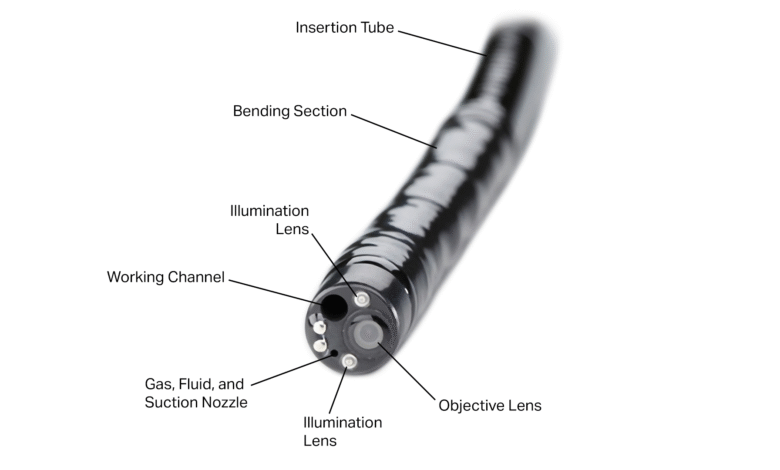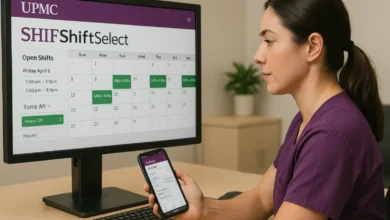Smooth Insertion, Gentle Pressure: Essentials of Endoscopic Delivery

Endoscopy can be considered the marvel of minimally invasive diagnostics and treatment. With the increasing need to recover quicker and with fewer traumatic procedures, the use of precision-engineered medical instruments is also increasing. Among them, the endoscope and CO 2 cylinders insertion tube are the ones that have a silent, yet important role.
These components are usually ignored but they make procedures comfortable, safe and clinically accurate. The insertion tube is guided through the complex twists and turns of the human anatomy and CO 2 insufflation creates the ideal conditions of visibility and minimal patient distress. They are the pillars of contemporary endoscopic practices together.
This paper provides a closer examination of these key components- examining their composition, role and purpose in the reinvention of patient-centered care. As a medical practitioner, device manufacturer, or even a technology-savvy reader, being acquainted with these parts allows one to appreciate the complexity of the endoscopic delivery systems.
The Insertion Tube: A Pathway to Internal Precision
Endoscope insertion tube is the main pathway where the endoscopic visualization and therapeutic intervention are performed. This tube should be flexible, durable, biocompatible, and at the same time have a perfect balance between maneuverability and structural integrity. It acts as the guiding route and it brings the optical system, working channels, and fluid management systems far into the body.
The tube, typically made of a mixture of polymer sheaths, stainless steel braiding, and Teflon-like linings, has to resist flexing and torsion many times without degrading functionality. Internally it has several channels- each with its specific functions of either transmitting images, insertion of tools, irrigation or suction.
Among the chief engineering problems in the development of an insertion tube of endoscope is the stability of the image and promptness of the instrument and the capability of the tube to bend through intricate anatomical arrangements. The manufacturers will have to consider variable stiffness in different parts of the tube, which will enable them to navigate more controlled in sensitive environments such as the gastrointestinal or respiratory tracts.
CO₂ Cylinders in Endoscopy: A Comfort-Centered Innovation
Insufflation is required in most endoscopic procedures, particularly in procedures of the gastrointestinal tract. It makes working space clearer, as internal cavities are softly stretched. Traditionally air was used but now CO 2 cylinders are the new norm in this application-and rightly so.
Carbon dioxide has a number of advantages as compared to room air. The body absorbs it up to 150 times faster than nitrogen, which comprises the major part of the ambient air. Therefore, the post-procedural pain due to the retained gas is considerably minimized. The patients usually have a reduced amount of bloating, cramping and pain and the recovery process becomes easier.
Endoscopy CO 2 cylinders are intended to deliver an accurate amount of CO 2, and have integrated regulators and flow control valves. This makes the insufflation process safe, regulated and reproducible. Safety features on modern systems include overpressure alarms, and auto-shutoff valves to prevent accidental over-inflation, as well.
The clinical staff workload is also decreased due to integration of CO 2 systems into endoscopic platforms. The settings are pre-calibrated and automated delivery systems ensure that fewer adjustments need to be made manually by the medical staff and more attention can be paid to the actual procedure.
Notably, clinical studies support the application of CO 2, showing its effectiveness compared with regard to patient satisfaction and safety. Since compact and portable CO 2 cylinders are available, even outpatient and mobile clinics are now able to provide this high standard of care. The replacement of air by carbon dioxide has changed insufflation into a patient-focused innovation instead of being a technical procedure.
Synergy of Structure and Insufflation:
The interaction between the insertion tube of endoscope and CO 2 cylinders is not incidental, but a good instance of component synergy in a medical design. Although they have different purposes, their functions are highly intertwined especially in complex procedures.
The insertion tube offers the mechanical channel upon which instruments and images are conveyed. But unless the insufflation is properly done with CO 2 cylinders, the visibility would be reduced. The diagnosis and intervention may be impaired by a collapsed lumen or foggy field. Therefore, CO 2 is not merely a comfort feature, it assists in the precision of procedures.
In the meantime, the insertion tube should be constructed in such a way that it can have internal gas lines without any danger. High-performance tubes have specific insufflation channels that allow to keep the exact pressure flow without affecting the functionality of other systems like imaging or suction.
Such synergy is even more crucial in more complex procedures such as Endoscopic Submucosal Dissection (ESD) or Natural Orifice Transluminal Endoscopic Surgery (NOTES), in which tissue manipulation and visualization are ideally co-registered.
The outcome is a smooth workflow: insertion, navigation, visualization, and treatment all facilitated by the interrelation of the mechanical structure and controlled insufflation. This is the future of endoscopy, where the device components will be synchronized to improve the performance of the clinicians and the welfare of the patient.
Safety, Sterility, and Regulatory Standards:
Clinical setting is a place that requires not only accuracy, but also the strict observance of safety and sterility measures. The insertion tube of the endoscope and CO 2 cylinders are also under the strict regulation guideline to make sure that they are safe in clinical use.
Insertion tubes are considered semi-critical devices, which contact mucous membranes and as such must be high-level disinfected or sterilized between uses. The materials to be used should be able to resist repeated cleaning agents and high temperatures without losing their properties.
In the meantime, the CO 2 cylinders should be produced according to the pressure vessel code and to the medical grade gas requirements. Most of the time they must conform to ISO and FDA regulations which specify everything including the purity of gases, labeling of cylinders, and even the design of valves.
The medical personnel should be trained on the usage and handling of the two parts. Procedural complications may arise due to error in CO 2 flow rate or incorrect technique of insertion. This is why manufacturers tend to include elaborate operation manuals, video-tutorials, and safety training modules.
Conclusion:
The wonders of endoscopic technology are not only in the lens of the camera or the hands of the surgeon, but also the unglorified parts that enable precision to exist. Endoscope and CO 2 cylinder insertion tube might not appear much individually but collectively they make the essence of present day endoscopic competence and patient comfort.
With the ever-evolving technologies, even more, intelligent integration, safety, and outcome-enhancement can be anticipated through these enabling tools. On the road to minimal invasive, patient-centric treatment, these elements are the silent partners that makes insertion easy and pressure delicate at all the decisive moments.




